|
There is plenty of room available on the Trae Young bandwagon. The question is whether his slight frame, size, and lack of explosive athleticism is enough to carry said wagon, let alone an entire NBA franchise. The Atlanta Hawks passed on Luka Doncic, the draft’s most intriguing prospect, betting he can. When the Hawks traded back two spots in the draft, picking up an extra first-round pick from the Dallas Mavericks in the process, I fastened my seatbelt firmly on the bandwagon, hoping never to be unfastened. Trae Young led the nation in both scoring and assists, showcasing a flare for the dramatic and wowed audiences in ways many hadn’t seen before at the collegiate level. Still, there are plenty of concerns about Young’s ability to translate his game to the NBA. His flaws are glaring. Young lacks the size teams desire, struggling with physicality and wearing down by the end of the season while practically wearing a sign reading “attack me,” on defense. The question isn’t whether Young’s defense can improve above passable, but whether his offense is so tantalizing, it’s worth dealing with it. The right personnel and organization can mask his limitations enough to capitalize on his promise. The Hawks seem like the right fit. Atlanta is at the beginning of a rebuild, so they’ll presumably have the patience to ride through the bumps Trae Young experiences while adjusting to the rigors of such a physical league. And the roster construction is in such an early stage, Travis Schlenk and the Hawks should be able to custom tailor it to suit his needs perfectly. Destructive GravityMany see Young’s deep range, quick release and undersized frame and want to compare him to Stephen Curry, the two-time MVP and perhaps the greatest shooter of all time. The comparisons are in their infancy; Trae Young burst onto the scene this season after being under-recruited and now he’s a top-five pick. We need to see how he plays outside of Norman, Oklahoma before we anoint him the next Curry. Perhaps the biggest attribute we’ve seen with Curry is his ability to act as a gravitational force when he’s moving around freely on the offensive end. Whether in transition or while moving off screens in the half-court, great shooters running around the three-point line have a magnet-like ability to draw defenders towards them. Here’s friend and former NBA Video Coordinator Mo Dakhil on Curry’s gravitational pull, to illustrate the effect: Great shooters seem to have this effect when they get out in transition. Young is at his best operating in chaos and the Sooner had the 12th most transition possessions in the NCAA last season, maximizing the amount of time their freshman sensation was in the open floor. But Oklahoma had one giant flaw with their transition attack: they had nobody else to handle the ball and push it up the floor. Young was caught constantly calling for the ball and dribbling it up himself, making up for the lack of ball handling prowess that flanked him. Had it existed, Young could have been so much more lethal in transition. It’s that lack of talent around him at Oklahoma which limits a look into what might be his most potent offensive skill: his gravity. Similar to Curry, the threat of a great shooter like Young zipping around without the ball would maximize the utility of all his teammates on the floor. He’s got the same type of importance when roaming without the ball in his hands, demanding the attention of any defender unfortunate enough to see him running up the floor in transition: Look at how high these pickup points are! Literally every defender that played against the Sooners was scared sh*tless of Young getting even a breath of air within 25 feet and it led to wide open scoring opportunities for his teammates. Other Uses of Young's GravityGravity doesn’t just occur when players run off screens or in transition, though. One of the most classic examples of leveraging a great shooter without giving them the ball is in post-up situations or isolations. Post players trying to score one-on-one with their back to the basket is rapidly being phased out of many offensive attacks. The removal of defensive three second calls in the NBA has allowed more teams to trap the post or load-up from help positions on the weak side. One-on-one scorers do most of their damage when they have an entire side of the floor to themselves, while their four teammates (and four defenders) clutter up the weak side. Defenses are so creative and players are so long and athletic, this style of play doesn’t lead to high-quality shots frequently. Having four offensive players on one side of the lane simply doesn’t cut it. Young provides value while standing as the only player on the ball-side wing in post-up situations. Now, only three players are on the weak-side, giving much better spacing and opening more avenues for passes to penalize those defenses that try to chip down on the isolations. Young stands in an important position, as defenders on the strong-side wing during a post-up are classically trained to dig down on the post, or swipe at the ball and force a kick-out pass whenever the offensive player puts it on the floor. Young faced double-teams, hard-hedges on ball screens, traps at half-court and numerous gimmicks during his freshman campaign. Perhaps no larger sign of respect is how tight defenders played him during post-up situations when Young was the entry passer and remained on the strong side. Teams felt much more comfortable sacrificing the two points and playing four-on-four inside the arc, bear-hugging a shooter that stood nearly 30 feet away from the rim. But wait a second… isn’t the post-up dead? Not really… it just looks different. As Ben Falk and Ryan Nguyen wrote earlier this season for Cleaning the Glass, it now takes the shape of a way to create openings for three-point attempts or to exploit switching schemes that leave a small interior defender vulnerable. In the switch-happy NBA, the Hawks can exploit Young’s shooting prowess by forcing a switch on the perimeter as teams don’t want to give him an ounce of daylight, then play through an advantage said switch creates. It also has the dual effect of leaving a bigger, slower defender to check him when he’s away from the ball. Young has already become crafty in these scenarios, getting himself open by getting his defender to step closer to the perimeter in a denial, then darting towards the lane. As he takes a half-step advantage over his defender, Young must now make the appropriate advantage read as he attacks the lane, receiving the ball at about the elbow. He makes the right reads based on how the defense reacts to him: One of Oklahoma’s many pitfalls last season was they couldn’t get more shots for Young coming off of screens. Per Synergy Sports Tech, Young only took 22 shots coming off screens set by teammates last year. He made 11 of them with an effective field goal percentage of 72.7 percent. Only one player in the NBA last season had a higher eFG% when jutting off screens: James Harden, who only logged 16 attempts here. The key to Young unlocking this potential to suck opponents in as he roams around the court would be coaching, offensive structure and philosophy. Synergy offers a great amount of data on individual player’s shot profiles: where and how they get their shots, the effectiveness of each type, and the points per possession each maneuver offers. Young’s gorgeous Synergy profile is the right combination of highly efficient, sustainable, and incredibly versatile: The secondary table, which shows each play type, asserts exactly 75 percent of Young’s attempts came from either the pick-and-roll, isolations or in transition. An astounding 37 percent of his shots came out of the pick-and-roll: that’s more than Chris Paul, James Harden, Rajon Rondo or Victor Oladipo could claim in 2017-18. Seeing that Young attempted fewer than 50 shots out of handoffs or off screens – fewer than two attempts per game – demonstrates an ability to change his effectiveness if his shot profile were to morph to be closer to Stephen Curry’s: The efficiencies are very similar between the two in many types of these scoring scenarios. Both rate slightly below-average in transition (due to the difficulty of attempts they take while running down the court in comparison to most, who get easy slam dunks or uncontested layups), highly efficient coming off screens and handoffs, and have similar turnover rates in many play types.
But the “percentage of time” columns, which show frequency of each play type, are drastically different. Curry is much more balanced: he avoids isolations, takes three shots per game coming off screens, is allowed to be a catch-and-shoot threat, and is able to lower his turnover rate on ball screens by lowering his frequency there. Sooners coach Lon Kruger ran plenty of dribble weaves, misdirection ball screens, and sets where Young screened for the trailer, then got the ball back near the top of the key. He didn’t push his best player to run through the lane from one side to the other on many sets, infrequently running Floppy or screening actions designed around Young cutting from the baseline. Instead the Sooners were heavily ball screen-based. While Young thrived in these scenarios, the optimist in me sees the limitless potential for his offensive game when his usage is shifted from ball-dominant PNR handler to shifty threat coming off screens. It was super encouraging to see the Hawks draft Kevin Huerter, a smooth-shooting wing with great footwork and a quick release, to flank Young in what could some day be the ATL-version of the Splash Brothers. They also took a stretch-5 guy in Omari Spellman, who could provide even more spacing, and could pair those players with the likes of Dewayne Dedmon, a shot-blocking center who makes corner threes, and John Collins, the up-tempo pogo-stick who just finished his rookie season. Young throwing lobs to Collins in transition is the type of stuff opponents throw atop their scouting reports. Young’s overall volume at Oklahoma wore him down last year, and his percentages dropped as a result. But the vast majority of those attempts came out of Young’s creation for himself, as he lacked the teammates to create opportunities for him. As the year wore on and defenders got physical with Young, the amount of energy expended on his part to get himself high-quality shots limited his effectiveness. At the next level, with more skillful teammates, a system that allows him to roam freely, and more spacing surrounding his pick-and-roll prowess, Young is a candidate to absolutely explode on the offensive end. Hop on the bandwagon while you still can.
0 Comments
The news broke late Friday morning: Kawhi Leonard wants out of San Antonio. The eery and strangely-developed drama between the two sides is too much to overcome, and Leonard feels its best for a fresh start. ESPN's Adrian Wojnarowski also reports that his camp has requested a few places for a targeted destination, focusing around Los Angeles. The Spurs are in a unique position to oblige him, coming after last season where three All-NBA caliber superstars (Paul George, Chris Paul, Kyrie Irving) all switched teams. Those trades proved that having a superstar demand a trade doesn't mean leverage is evaporated, and the Spurs will still look to find the right value for Kawhi. This trade is particularly telling for Leonard, though: he's willing to sacrifice the potential SuperMax deal he could sign with San Antonio just to get a new hold. That said, Leonard is on the final guaranteed year of his contract, with a player option for 2019-20 that he's likely to decline. How much will a team give up without further assurances that Leonard will re-sign with them? What will San Antonio's asking price be given the uncertain nature of Leonard's health? There's a lot to unpack with his trade value. We attempted to unpack the best destinations for Leonard here at the Box and One, with a tasting of a few trades that could procure the former NBA Finals MVP. A couple nuts and bolts before we get there: -The Spurs have the leverage to decide when to make the trade official. They can make a swap before July 1st, in which case the maneuvering around of monies will also affect the 2017-18 cap status. Or they could wait until after July 1st and agree on a deal pre-draft, which gives other teams more flexibility to have additional spending room, helping them avoid the luxury tax. -Leonard has a 15% trade kicker in his contract, and that changes based on when he's officially traded. His 2017-18 contract was for $18.868,625, so if he's traded before July 1st his outgoing trade value is $21,698,919. If he's traded after July 1st and the start of a new cap year, that 15 percent gets calculated on his 2018-19 salary, which is $20,099,189. That new outgoing salary: $23,114,068. -The Spurs cannot include Danny Green, Rudy Gay or Joffrey Lauvergne in any deals unless the exercise their player options first. The only players that can change hands immediately: LaMarcus Aldridge, Pau Gasol, Patty Mills, Manu Ginobili, Derrick White, Dejounte Murray, Brandon Paul. Scenario #1: Los Angeles Clippers The Clippers trade F Tobias Harris, PG Patrick Beverley, the 12th and 13th picks in the 2018 NBA Draft and a 2022 first-round pick to the San Antonio Spurs for F Kawhi Leonard, the 18th pick in the 2018 NBA Draft and a 2020 protected second-round pick. If you ask me, this is the best deal for both the Spurs and for Leonard. Kawhi goes to the Clippers, a team that has a ready-made NBA big man in DeAndre Jordan and multiple pieces to build with. Los Angeles is his preferred destination as it's home for him, and he gets to go to the team that has a proven winner in a coach, a great President in Jerry West and an owner committed to paying for a championship contender. Here Kawhi is also not on the Lakers big stage and bright lights, allowing him to continue to be a more sheltered, reserved superstar. On the court the Clippers would likely try to retain point guard Milos Teodosic this summer after the news of a Kawhi trade, giving them a formidable starting group of Teodosic, Lou Williams, Kawhi, Danilo Gallinari and DeAndre Jordan. Austin Rivers would anchor the bench group, while Jerry West still would have $5.3 million between them and the luxury tax, and $11.3 million away from the tax apron. In this scenario the Clippers would be giving up both lottery picks in a Kawhi trade, but also be able to snag one more key player in the draft by trading back to 18th. The Clippers could structure the trade here in any way San Antonio preferred: in the current or next fiscal year. They're shedding salary by taking on this year's Kawhi contract, which keeps them below the luxury tax line, the organizational imperative of the Clippers. For San Antonio, this deal makes sense for a couple of reasons. One it allows them complete flexibility for how to move on from the Kawhi era without dictating they stay competing or rebuild. The picks are the centerpiece of the deal and could allow the Spurs, with picks 12 and 13, to completely revamp the way they take a shot at Golden State and Houston. Adding those selections, a versatile scoring forward in Tobias Harris (who is only 26 years old and coming off a career year) and one of the best perimeter defenders in the game could cushion their aging roster. There's also flexibility built in if they want to change things around. Next summer will be a year of great fluidity in San Antonio, where guys like Parker and Ginobili may finally hang it up, Danny Green and Rudy Gay will assuredly be off the books, Pau Gasol only has a partial guarantee remaining and LaMarcus Aldridge and Patty Mills are the only guys under contract. If their grand experiment doesn't work, they'd then get to completely rebuild around the two 2018 picks and Dejounte Murray as their core, plus have the Bird rights to Harris. Scenario #2 - Philadelphia 76ers The San Antonio Spurs send F Kawhi Leonard to Philadelphia for G Jerryd Bayless, F Dario Saric, G Markelle Fultz and the 10th pick in the 2018 NBA Draft This is a pretty aggressive offer from the Sixers, but it's one that basically opens their window to being right now and closes the Spurs for the next year or two. From a pure talent perspective, it might be difficult for the Spurs to turn this one down... depending on how comfortable they feel with Fultz. The red flags and question marks revolving around Fultz are brighter and flying higher than those around Kawhi's quad injury, so it's strange to see him as the headliner in a deal. That's why Philadelphia also includes the valuable Saric and the 10th pick in this year's draft. From a Kawhi perspective, he'd look to re-up with the Sixers and build their core with himself, Joel Embiid and Ben Simmons. The Sixers would also preserve enough room to retain J.J. Redick this summer, have Robert Covington still under contract and potential Mid-Level Exceptions. They're an instant contender in the Eastern Conference. On the other hand, the Spurs have their backcourt of the future in Fultz and Dejounte Murray, a playmaking versatile forward in Dario Saric and plenty of cap space in 2019 when Bayless, Rudy Gay and Danny Green disappear from their books. The only way the Spurs accept this deal is if they're comfortable with a rebuild, and if you ask me that's not what they'll want to do under Popovich if they can construct a better trade that allows them to hang in the picture out West. Scenario #3 - New York Knicks San Antonio trades F Kawhi Leonard and PG Patty Mills to the Knicks for C Enes Kanter, PG Frank Ntilikina, G/F Courtney Lee, the 9th pick in the 2018 NBA Draft and an unprotected 2020 first-round pick. Stolen and tweaked from my friend and colleague Dan Favale, this is actually a trade destination that makes a ton of sense for Kawhi. He spends a great deal of time in the Big Apple working out and rehabbing, has expressed interest in a larger market and would have a clearer path to winning in the Eastern Conference. A combination of him and Kristaps Porzingis, along with raved-about head coach David Fizdale, could loft the Knicks onto the long-term destination list. The Knicks would have to give up last year's lottery pick Ntilikina, this year's lottery pick and a 2020 first-rounder, but that's plenty worth it to procure Kawhi's services. They'd also have to eat Patty Mills as their point guard for the next three seasons. I'm not sure how the Knicks fill things out next season without Porzingis and limited space this summer, plus no draft pick, but this is a long-term play by the organization. It also limits their ability to pay someone to take on the Joakim Noah deal. There are real consequences here, none bigger than the prospect of Kawhi leaving New York next summer if he isn't satisfied with the way the Knicks perform in what should be a frustrating season ahead. From San Antonio's perspective, they'll salivate about the long-term ability in the backcourt of Ntilikina and Dejounte Murray as long, versatile defenders. The 9th pick could provide them the opportunity to add a big piece in this year's draft as well, and the 2020 first-rounder could have a great deal of value if Kawhi eventually leaves New York. This is an interesting scenario, and one that ultimately could come to fruition if other teams are bullish about Kawhi. Scenario #4: Los Angeles Lakers
The San Antonio Spurs send F Kawhi Leonard to Los Angeles for F Brandon Ingram, the 25th pick in the 2018 NBA Draft, and 2020 and 2022 first-round picks. The Lakers are the rumored destination for Kawhi and have been for a while, but I don't like any deals they can construct from a Spurs perspective. There's a limited amount of trade assets the Lakers have right now: Luol Deng, Brandon Ingram, Lonzo Ball, Tyler Ennis, Kyle Kuzma, Josh Hart and Ivica Zubac, as well as future draft picks. The Lakers will be far enough under the cap that they can absorb Leonard in the next cap year without having to send Deng as outgoing salary filler. The issue comes in other forms of compensation. Trading Kawhi to Los Angeles makes the team more competitive, and in turn devalues their future first-round picks. Do the Spurs really value Brandon Ingram and a few other late first-rounders as the best deal they can get for Kawhi? Would the Lakers give up a young scoring wing brimming with upside and three other first-round picks for a player they might be able to poach in free agency next year if they play their cards right? At the end of the day, the Lakers would pull the trigger on this deal, netting them the star two-way player they crave. San Antonio though might need a sweetener to choose this over some other deals available to them. The NBA Finals are wrapped up, and the offseason has officially begun for all 30 teams in the NBA. The two squads that met in the NBA Finals -- Golden State Warriors and Cleveland Cavaliers -- will have drastically different offseasons. The reigning NBA Champions will have some shuffling to do at the bottom and ends of their rosters, while the Cavaliers are locked into their role players and are awaiting the crucial decision for LeBron James this summer. Here's a potential outlook and game plan for each team: Cleveland Cavaliers 2017-18 Record: 50-32 2018 Draft Picks: 8th (via BRK) Restricted Free Agents: G Rodney Hood Unrestricted Free Agents: F Jeff Green, PG Jose Calderon Other Players of Note: F LeBron James (player option), F Okaro White (non-guaranteed contract), C Kendrick Perkins (team option with non-guaranteed contract) Committed Salary: $137,976,709 Luxury Tax Room: -$13.9 million No team has ever been more strangled by the decision of one player than these Cleveland Cavaliers. LeBron James will decide whether he'll move on or come back to Cleveland and try again with this core. It will be a divisive decision and one that impacts his legacy and perception greatly. From an organizational perspective, it's the difference between trying to compete for an NBA Championship and starting a full tear-down of a team that made the NBA Finals four-straight times. Order of Operations: 1. Wait on LeBron There's no choice in the matter. Whatever LeBron wants, LeBron gets. If he chooses to return, the Cavaliers will have to suck up the luxury tax penalties, orchestrate a few more moves to improve their chances of toppling Golden State, and vie for another NBA Championship. It's the only logical move as long as LeBron is around. If LeBron opts out and leaves, the Cavaliers will still have a committed salary of over $102 million. Retaining Rodney Hood would likely vault them closer to $110 million, and a Mid-Level Exception could put them closer to the luxury tax. From there, Cleveland can limit their own spending, and perhaps even try to move in on an Eastern Conference playoff spot built around Kevin Love for a year. It's unlikely they'd qualify, but crazier things have happened. The nightmare scenario though involves LeBron opting into his final year and demanding a trade, allowing him to pick a team like the Houston Rockets, where he can compete and the Rockets can bypass free agency restrictions to bring back their core. Cleveland would then have little choice but to absorb big contracts of Ryan Anderson and Eric Gordon, vaulting them into the luxury tax again and forcing an all-out tear down to both lower costs and accumulate assets to be competitive down the line. Cleveland would likely be one of the worst teams in the league next season as a result. With those three different scenarios, we will take you through a quick sketch of the team's best plans within each situation, following a quick synopsis about their draft scenarios: 2. The 8th pick and the LeBron timeline Many times a team that is competing for a title but still manages to snag a top-ten pick will spend the pick on a long-term piece that has a great deal of upside. Detroit did that with Darko Milicic back in 2003, opting not to shake up the established core. Cleveland doesn't have that luxury and needs pieces that help them win within LeBron's window. The 8th pick is a little too low in the draft, and the Cavaliers have a few too many needs, to predict exactly who they'll take at a spot like this. Trendy names like Mikal Bridges of Villanova, Wendell Carter Jr. of Duke, Miles Bridges of Michigan State and Collin Sexton of Alabama are all ready to play immediately and could provide the Cavaliers an extra punch on either end of the court. Cleveland is hopeful to have the LeBron decision clearer by the draft on June 21st, but likely will go into it blind. If a player like Michael Porter Jr. or Trae Young is still on the board at 8th overall, this could be an intriguing dilemma for GM Koby Altman: draft one of those tantalizing but flawed pieces, or pass on them and go with a more immediately-ready piece? The scenarios 3a. (LeBron stays): Let Hood walk If LeBron decides to stay, he could do so by opting out and signing a new deal for more money with the Cavaliers. That would stiffen the tax penalty on the Cavs, and make a divisive player like Rodney Hood potentially expendable. Hood's asking price will likely be above $5 million a year, adding nearly $22 million in luxury tax penalties at the minimum. Cleveland likely cannot match another offer if one comes in for Hood, and should prepare to move on and plug that hole with Veteran Minimum deals. 4a. (LeBron stays): MLE options Their emphasis should go on using their $5.4 million MLE to retain Jeff Green. The Cavs don't have to use the entire exception on Green, but something slightly more than the minimum should dictate his return. Again, the luxury tax is a major concern here, but splitting the MLE with Green and maybe one more perimeter shooting veteran like Marco Belinelli or Jamal Crawford. 5a. (LeBron stays): Limited trading options There aren't a lot of ways the Cavaliers can engineer trades this summer. Few people will want to touch the large guarantees to guys like George Hill, JR Smith, Jordan Clarkson and Tristan Thompson. Both Hill and Smith have partial guarantees in 2019-20, though it's more likely that other organizations wait until at least February to take advantage of those assets. Altman might have to shop younger pieces like Cedi Osman and Ante Zizic to add some veteran role players if they want to make aggressive moves. 3b. (LeBron leaves via free agency): Lock up Hood Once LeBron announces he's gone via free agency, expect many other teams to begin movement around the league -- there will be a great deal of patience as the rest of the league waits for his decision. Cleveland's first call should go to Hood, knowing they'll need his scoring and they have the Bird rights of a young restricted free agent. Instead of letting another team drive up the price, a fairly generous offer in the ballpark of three-years and $25 million with a third-year player option should get them in his good graces. 4b. (LeBron leaves via free agency): Shopping Kevin Love and Kyle Korver Love and Korver both have extreme value on the trade market thanks to the duration of their deals and being pieces that are built around winning now. Love's offensive versatility makes him an ideal target for teams like Portland, Miami, Phoenix or Utah. Korver and his role playing prowess would be ideal for many title competitors. Cleveland will know the title window is closed as soon as LeBron leaves, and instead of overpaying to get off their worse contracts, getting prime draft assets or young players back for Love and Korver, without having to worry about the luxury tax, is a great option. 5b. (LeBron leaves via free agency): Building blocks If Love and LeBron are both gone, who are the guys that the Cavaliers are building around? Larry Nance and Rodney Hood aren't top-notch options, and depending on what Cleveland does with the 8th pick they may not have an alpha male. Because Cleveland has a top-ten protection on their first-round pick, which is owed to Atlanta, they'd likely want to win as sparingly as possible, maximize the minutes to those youngsters they do possess, and add their franchise building block in the 2019 draft. 3c. (LeBron opt-in and trade): What do they take back? Cleveland doesn't have a ton of control here, but if they take back more salary they're likely to also take back more picks. Houston would send Ryan Anderson and Eric Gordon, Portland likely CJ McCollum and Moe Harkless. Either way you slice it, if this scenario happens, LeBron is leaving the Cavaliers in a terrible scenario: with more dead weight salary, still with a massive luxury tax penalty and no players worth building around. 4c. (LeBron opt-in and trade): Complete tear-down, including paying to get money off The Love and Korver trade scenarios still occur, but additionally Cleveland enters an additional territory: trading draft picks just to get off the contracts that vault them into the luxury tax. At that point, the non-guaranteed contracts of George Hill and JR Smith become more valuable to Cleveland than to other teams, allowing them to cut them next summer and precipitate a complete roster change. Owner Dan Gilbert won't want to pay the luxury tax in the meantime though, and with Cleveland likely having to shed up to $15 million just to dip that line, it's not unreasonable to expect the Cavaliers to attach a young player or a pick just to get below. Calls to Atlanta, Sacramento, Dallas, Chicago and Phoenix become priorities as the team searches for cap space. 5c. (LeBron opt-in and trade): Free agency chaos It's unlikely the Cavaliers can afford Rodney Hood or use their MLE if they'll be in luxury tax territory and a non-competitor. Look for Cleveland to simply offer multiple camp invitees on minimum deals roster spots, starting the dreaded (dare I say it) tank job. Golden State Warriors
2017-18 Record: 58-24 2018 Draft Picks: 28th Restricted Free Agents: G Patrick McCaw Unrestricted Free Agents: G Nick Young, C JaVale McGee, F/C Kevon Looney, F/C David West, C Zaza Pachulia Other Players of Note: F Kevin Durant ($26.25m player option) Committed Salary: $129,886,406 Luxury Tax Room: -$5.8 million There aren't many questions with the core of this team right now. Eventually guys like Draymond Green and Klay Thompson will have to get paid, while Andre Iguodala and Shaun Livingston are aging quickly. This summer's big investment: Kevin Durant, as the Finals MVP is likely to decline his player option for next season and cash in on a larger deal, likely worth the maximum available. That will add about $10 million to Golden State's luxury tax penalties, but it's worth it to keep the band together. That said, Bob Myers and the rest of the basketball decision-makers must figure out how to balance the roster out in a summer where many veterans and key role players are free agents. Order of Operations: 1. Size or versatility through the draft? Picking 28th in the 2018 NBA Draft, Golden State will want to find another piece that can come in and help the core. As coach Steve Kerr noted on the Lowe Post podcast with Zach Lowe this morning, he likes the thought of adding youth and more guys that must scratch and claw for minutes, as it helps keep the team motivated and adds a mentoring presence to the vets that keep them engaged. Golden State won't be selling this pick at all. That said, many of their free agents are interior defenders and guys that come in and guard opposing post players. Golden State's best draft pick of the last three years, Jordan Bell, projects as a 4 or a 5 man that could take some of that responsibility. The Warriors also have a need for outside shooting combined with positional versatility, where some of their most versatile pieces - Iguodala, Livingston, Bell and Draymond Green - are below-average three-point shooters at best. Assuming the Warriors view valuable pieces of each on the board when they pick, which priority will they take? To me, it has to be outside shooting and defensive versatility. There aren't a ton of big men of value that will be on the board around 28th. Omari Spellman of Villanova and Mitchell Robinson are the two names that could hover around that area. Instead, the shooters and long wings that can both shoot and defend multiple positions are bountiful near the end of the first-round. Some names: Josh Okogie, Khyri Thomas, Chandler Hutchison, Keita Bates-Diop and Melvin Frazier. 2. Kevin Durant's deal done early There is no advantage to the Warriors waiting in free agency to get the long-term deal with Durant agreed upon. The Warriors should give him whatever he is looking for money-wise. That said, which type of structure will Durant prefer? A one-and-one contract similar to LeBron James, where he takes a higher dollar amount but retains the leverage to opt out and leave whenever he wants? Durant could also opt for a three-year max deal, with a player option in the second year. That would open him up for a potential five-year max deal in 2020, when the cap is once again expected to spike, worth around $225 million. The other option is signing a four-year max now, which would be worth a total of $158 million. That is the least likely option, and because Durant holds all the leverage over the tax-saddled Warriors that have no choice but to pay him, he should go for one of the first two scenarios. 3. Prioritizing and Paying their own Early Bird Free Agents Golden State has some needs via free agency, and players like Kevon Looney and JaVale McGee are due raises beyond their near-minimum contracts. Golden State has Early Bird rights for McGee, David West and Zaza Pachulia, meaning they can retain them for up to $8.7 million (105% of the league-average salary is the max that a team can offer an Early Bird free agent). The other option would be to split some of the Mid-Level Exception to keep McGee or Looney, if not both, and then use some of it elsewhere on attracting a new free agent. Early Bird Rights are tricky for the Warriors because of how it relates to the luxury tax. Paying guys like McGee, Looney, West or Patrick McCaw more than a minimum contract to come back will skyrocket their repeater tax penalties and raise their payroll. On the flip side, not paying them means the Warriors only have the MLE and minimum deals to attract new players. In a year with a truncated market and technically only 10 teams with more than the full MLE to offer, the Warriors could have the advantage of seeing good players trickle down to them as the money dries up elsewhere. Would that be enough to convince them to forego spending more on their own free agents with Early Bird contracts? Most experts think so. My best guess is that the Warriors will split the difference. Guys like JaVale McGee and Patrick McCaw (who has his own unique situation as an Arenas provision restricted free agent) would be their top targets for Golden State to lock up long-term. However, they do need to preserve that full $5.45 million Taxpayer Mid-Level Exception, as that combined with their winning circumstances should net them a decent haul. Replacing Pachulia or David West's on-court production should be easier. But Myers should spend to retain at least one of McGee or McCaw though, as letting all those players go and replacing them only through the draft and Mid-Level is a tall task. 4. The Taxpayer MLE and Nick Young That truncated market that was mentioned before should benefit the Warriors with utilizing their Mid-Level Exception. That likely means that with their $5.45 million offer they can snag somebody that's an upgrade over Nick Young. Of course, there is the added Early Bird rights that come next summer from using the MLE on Swaggy P, but the Warriors are more concerned with adding the right players to win now than navigating the cap for a veteran like Young. Who are some of the targets the Warriors should go after with their Mid-Level Exception? Some veterans might take the paycut and come to Golden State like Brook Lopez, Avery Bradley or even Trevor Ariza. Other names that are more perimeter-oriented, like Joe Harris or Wayne Ellington, could draw their attention. 5. Balancing veterans minimums with undrafted free agents Kerr mentioned he wants those younger players to come to town, and the undrafted free agent pool should be an attractive draw for them... not to mention those rookies liking the thought of going to the Bay Area. How should the Warriors finish the end of their roster with veterans that can help them win and in the locker room with some high-upside youngsters? Much of that depends on what players are available and who the Warriors target elsewhere. Still, don't be shocked if Golden State even purchases a second-round pick once again and gets in on the action for a high-upside piece that falls down draft boards for whatever reason. As the eyes of many NBA fans shift towards the postseason, some front office executives are thinking about how they can improve the fates of their franchises that are not currently vying for postseason play. The pre-draft process is filled with tons of scouting, evaluation periods, internal discussion and workouts for some of the hopeful rookies that want a spot in the NBA. Taking the drafting needs and picks into consideration, financial considerations can paint the biggest picture to what decisions will be made beyond the draft. Trading some players, utilizing cap space for taking on others, and preparing for free agency all are highly informed by the team's salary situations – after all, the NBA is a business. Both the Houston Rockets and Boston Celtics finished as runners-up in their respective conferences. The Rockets were the best team in the regular season in the entire NBA, and while they were on the brink of making the NBA Finals, they still have enough roster turnover and free agent spots to have a potentially better roster next year. Boston overcame great odds to make the postseason push they did, considering Gordon Hayward missed the entire year and Kyrie Irving wasn't in the playoffs. The ceilings are incredibly high for these two teams, but both have and will maximize their rosters in drastically different ways. Boston Celtics 2017-18 Record: 55-27 2018 Draft Picks: 27th Restricted Free Agents: G Marcus Smart Unrestricted Free Agents: C Aron Baynes, C Greg Monroe, PG Shane Larkin Other Players of Note: F Semi Ojeleye (partial guarantee), F Abdel Nader (partial guarantee), C Daniel Theis (non-guaranteed contract) Committed Salary: $107,433,523 Luxury Tax Room: $16.6 million No team is in a better position long-term than the Boston Celtics. They've had impeccable cap and asset management, have a glut of young talent signed for the long-term and a healthy salary cap sheet. There's so much upside for this team with the returns of Irving and Hayward that Boston doesn't need to rely heavily on free agency this year for any glaring needs. The Celtics could open next year with a starting lineup of Kyrie Irving, Gordon Hayward, Jaylen Brown, Jayson Tatum and Al Horford. Holy moly! Still, the two backcourt members that shouldered the load this postseason in the absence of Irving and Hayward have some important questions surrounding their value and how the Celtics navigate those waters. Remember: Boston could have up to four first-round picks in 2019 as well, so they're at no shortage of power in negotiating what they want. Order of Operations 1. The line in the sand with Smart It will be very difficult for the Celtics to replace the grit and mental edge of Marcus Smart if he leaves via free agency. While Smart isn't a great statistical player, his impact on a team is widely coveted around the league. Because Smart is a restricted free agent, the Celtics can match any offer for him and keep Smart in the green and white long-term. However, President Danny Ainge should be weary of going into the luxury tax this season. The Celtics, $16 million away from that line right now, will almost certainly vault above that level within the next few years, meaning the repeater tax is something to be cognizant of. It doesn't mean Boston shouldn't go into the luxury tax this year, as there's still the maneuverability to get themselves beneath it in the future. It simply means that Smart isn't a "keep at any cost" type of player. I'd identify about $12 million a year as the absolute max the Celtics could pay for him. Combine that with the cap hold from the 27th pick and the $5.45 million Taxpayer MLE, and the Celtics should be about $2 million over the luxury tax. Boston would then have only one roster spot to fill, and being that minimally over the tax would leave the C's in a decent position. 2. Scary Terry: to keep or to trade... or to extend It's quite possible that Terry Rozier's trade value never will be as high as it is right now. A restricted free agent in 2019, Rozier makes $3 million next season. However his path to heavy minutes may be blocked by the presence of Irving, meaning it is time to cash out on him now and remain flexible in the future. Scary Terry should net the Celtics a moderate first-round pick, and with teams bidding on him now before restricted free agency hits, it might be a solid coup to get those Bird rights and the right to match offer sheets next summer. Boston wouldn't be wise to wait until the trade deadline to deal Rozier if they know they can't pay for his services next summer, as his value could take a hit between now and then. But other teams around the league know that, and might as soon wait a year and bid highly for him on the RFA market, knowing Boston won't match. A lot of this decision changes if Marcus Smart is allowed to walk away, in which case a moderate Rozier extension could be in the works. Would Boston rather have Rozier for cheaper than Smart over the long-term and replace his defensive presence elsewhere? There are a ton of options available, but it wouldn't be shocking to see teams like Orlando, Phoenix or Brooklyn try to get involved with trades for Rozier. 3. Is draft-and-stash in play at 27th? There's barely any difference financially between the Veteran's Minimum contract and the 27th pick this season, which puts Boston in a solid place no matter what they decide to do regarding the luxury tax. Boston and Danny Ainge could grab another future asset and draft-and-stash European prospect to add to their stockpile without the clock ticking for its contract. There are a couple of names that fit the bill. Dzanan Musa, a tall and wiry playmaker on the wing, would be a welcome switchable addition to Boston's bench down the line. Elie Okobo, the scoring and playmaking point guard, would be a long-term backup to Kyrie Irving, buying the Celts more time to resolve their work with Rozier and Smart. I also like multi-positional defender Isaac Bonga here, who could be a multi-year project for the Celtics. Many think that teams competing for a championship go to their late-20s draft picks for ready-now NBA players. That's not always the case, and in a scenario where a veteran on the minimum could be had for the same price, there's little advantage to trying to stick someone who isn't absolutely ready into the rotation on a championship-chaser. 4. The Mid-Level Exception We saw the supreme value of Aron Baynes this postseason when the big man was an awesome rebounder and defender that also found a miraculous stroke from three. Boston needs to find a way to replace or retain him at the center spot. Of course though, the budget for getting that position is dependent on what happens with Marcus Smart. Should Smart come back to Boston, the Celtics will likely only want to use the $5.45 million Taxpayer Mid-Level Exception, covering their own ass from being hard-capped. With that $5.45 mill, Baynes should be available to stay, and that should be Boston's preference -- they'd sign him for two years and then secure his Bird rights for his next free agency. If Smart leaves, Boston's biggest tool for replacing him becomes the $8.8 million Mid-Level Exception, and now they have to figure out whose production to replace: Smart's or Baynes'. With the returns of two backcourt players from injury and Rozier ready to absorb those minutes, I'd expect Boston to actually split their $8.8 mill MLE at that point, as there aren't many big men on the market who fit into that budget nicely this summer. 5. Looking ahead... Because Boston has a stockpile of riches, the versatility is there for the C's and Ainge to make even another aggressive play to add to their roster. What that play is, we might not know for another year. In 2019, Marcus Morris and his incredibly team-friendly contract come off the books. That's a deal that will be difficult to replace, and the Celts will likely do so with their multiple first-round picks in that year. Could they ship away another one or two of them with Rozier to make a massive splash? I'm not anticipating a heavy amount of long-term movement from this core until we see how next year goes. The bottom line is this: Ainge won't do much this summer to take away his future flexibility with picks until he sees how the full-strength core looks. Houston Rockets
2017-18 Record: 65-17 2018 Draft Picks: 46th (from MIA) Restricted Free Agents: C Clint Capela Unrestricted Free Agents: PG Chris Paul, F Trevor Ariza, F Luc Richard Mbah a Moute, F Gerald Green, C Tarik Black, F Joe Johnson Other Players of Note: C Zhou Qi (non-guaranteed contract), G Aaron Jackson (non-guaranteed contract) Committed Salary: $81,046,641 Luxury Tax Room: $42.4 million Well, they've proved their point... Houston was just a few possessions away from toppling Golden State and making it to the NBA Finals. That should be enough to get buy-in from pretty much any type of veteran they want. Now, with the way GM Daryl Morey has constructed the roster with Bird rights and low salaries guaranteed, the Rockets can also be big-time players in free agency for the likes of LeBron James and Paul George. Scared of the Rockets yet? You should be... Order of Operations 1. Will they swing for a superstar? Right now, here's the quick version of how the Rockets add another superstar: they've got to trade for one, either via sign-and-trade or by one of them opting into their contract. So, if the Rockets were to add LeBron, they would have to orchestrate a trade with Cleveland, similar to the way they did with Chris Paul and the Clippers last year, that would see them part from Ryan Anderson and Eric Gordon, among other players. Why does it have to be this way? The cap hold of Chris Paul ($36 million) is too large for the Rockets to get far enough under the cap to sign one superstar outright. Whether they try to nab LeBron or even Paul George remains to be seen, but the Rockets will certainly place calls and see the interest that King James has of heading to the Western Conference. 2. The Ryan Anderson dilemma If the Rockets cannot get LeBron or George, they'll still explore ways to get off the contract of Anderson. Right now, with the playing style that best suits the Rockets and the rest of the NBA, a player like Anderson is simply difficult to tolerate defensively. Signed for more than $41 million over the next two years, it's a lot of money for a team competing for a championship to swallow for minimal production. On the flip side, we have to explore the cost associated with unloading Anderson, which likely is multiple first-round picks in the future. Houston won't be receiving cap space from an Anderson departure either, as they'll vault themselves over the cap with new contracts this summer anyway. So the question is: will Houston be desperate enough to pull the trigger on dumping Anderson, and will some other team that knows their desperate raise the cost of absorbing his deal? If it's me, I'm absolutely paying almost any price in terms of draft picks to offload Anderson. The tax savings, as well as the replacements available through the Mid-Level Exception, make the Rockets more than better off without him. If they believe in what they're building long-term, they'll sacrifice those draft picks. 3. Sign CP3 and Capela to their deals Here's where things get expensive, and why I listed the Rockets room beneath the luxury tax instead of the cap. If Capela and Paul both sign maximum deals with Houston, that will balloon Houston's current payroll up above $135 million. They'll still have five roster spots to fill as well. For this reason, the Anderson trade makes more sense (it gets the Rockets down to $115 million) and is worth the cost regardless. These Rockets are championship contenders, and both Paul and Capela are the two biggest pieces outside of Harden. Of course, the large $135 million-plus payroll is worth it if they can add another superstar to push them (hopefully) above Golden State. Still, there's little doubt that the Rockets will match any offer for Capela and be able to retain CP3. Don't cross your fingers that either take less than they're worth, but Rockets fans can feel secure knowing they'll both be back in Houston. That especially applies to CP3, whose max contract this year would be a five-year deal worth in excess of $200 million. That would pay Paul until he's 38... yikes. That might be a cost worth competing for a title if you're Houston, but it's also the quickest way for things to turn sour in a few years. Expect the Rockets to negotiate that number down as much as they can. 4. Fill in the holes from there Houston will be a popular destination for veteran free agents this summer, so long as they're willing to accept the minimum. That includes some of their own free agents, like Luc Richard Mbah a Moute, Joe Johnson and Gerald Green. All three had roles for Houston this year and likely would next season as well; they'd be welcomed back and all three should want to return. Of course, the biggest target is Trevor Ariza, whose Bird rights they own, meaning he can make more than the minimum. Houston will want to penny-pinch with his contract, limiting it both in terms of years (he'll already be 33 by the start of the season) and dollars (since they anticipate being in the luxury tax). Ariza is a player they don't want to lose because they're running low on players with Bird rights, and that's something they'll need if they want to keep their championship-caliber team together. Of course, there's the possibility that the Rockets use the $5.45 million Taxpayer Mid-Level Exception, regardless of what happens with Ariza or Ryan Anderson. Many players would take the pay cut to come to Houston, and that's a big deal for the Rockets in a year where there's a truncated amount of teams with signing power. 5. The troublesome 2019-20 repeater tax If the Rockets don't unload Anderson, they're facing a dangerous tax bill during the 2019-20 season. Assuming they go over the luxury tax this year, the team would owe $148 million just to Paul, Harden, Capela, Anderson, Gordon, PJ Tucker and Nene. That would push the Rockets to over $65 million in tax penalties -- and that's just with seven players under contract. Some people will say that paying the tax is the cost of competing for a championship. Others think more shrewd fiscal management is key to making this a worthwhile endeavor. No matter where you fall, it does seem like the Rockets will at least have to shed some money somewhere along the way. Their roster is in great shape and they're an attractive destination for multiple types of players this summer, but Morey has to be calculated enough in each action he takes to ensure the Rockets aren't overly-bogged down with tax payments in 24 months. |
Adam SpinellaHead Boys Basketball Coach, Boys' Latin School (MD). Archives
September 2021
Categories |
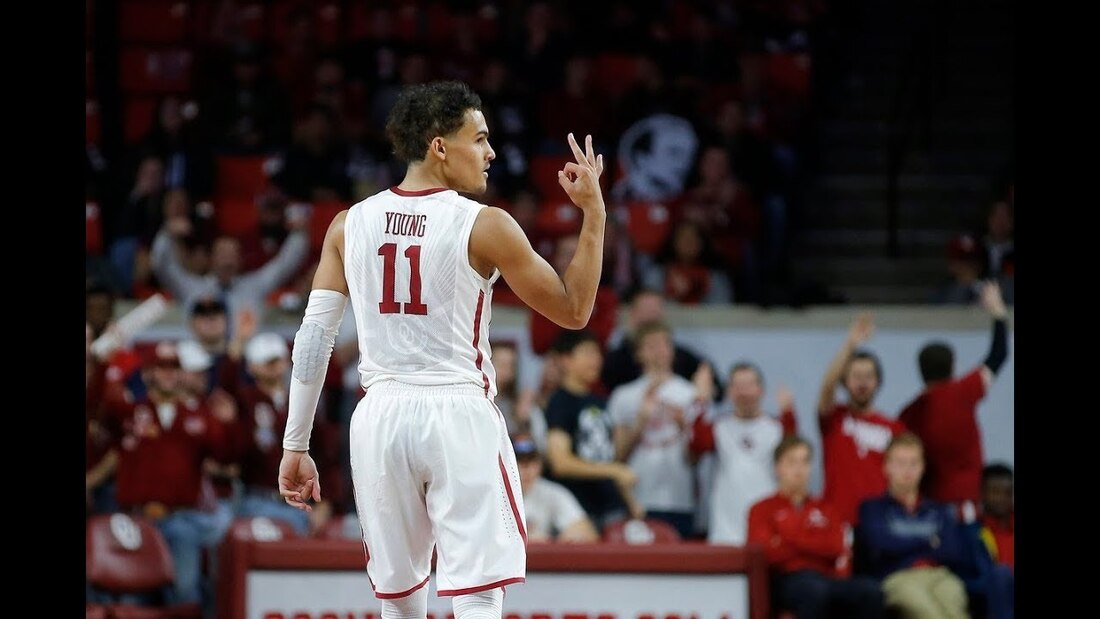
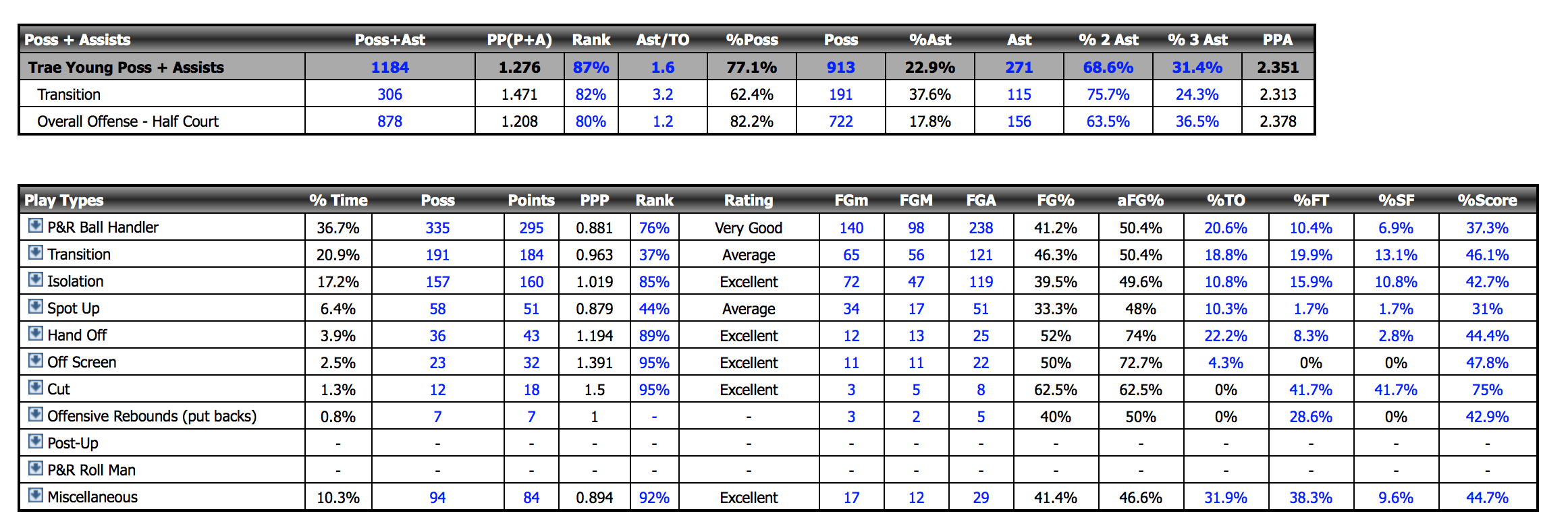
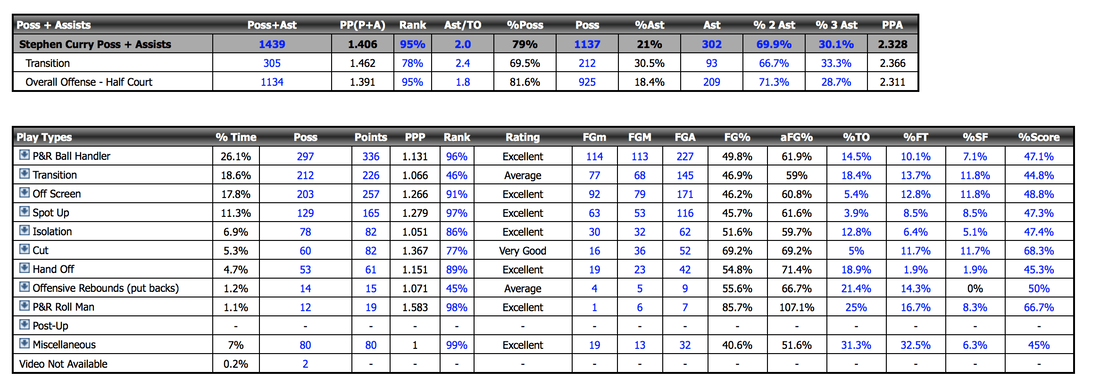
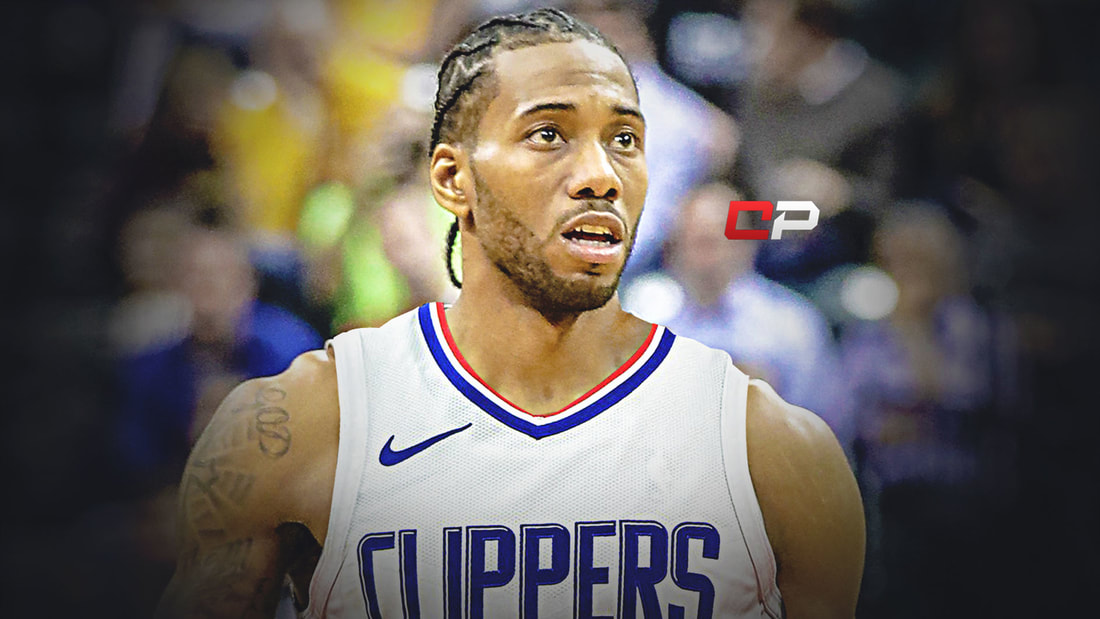
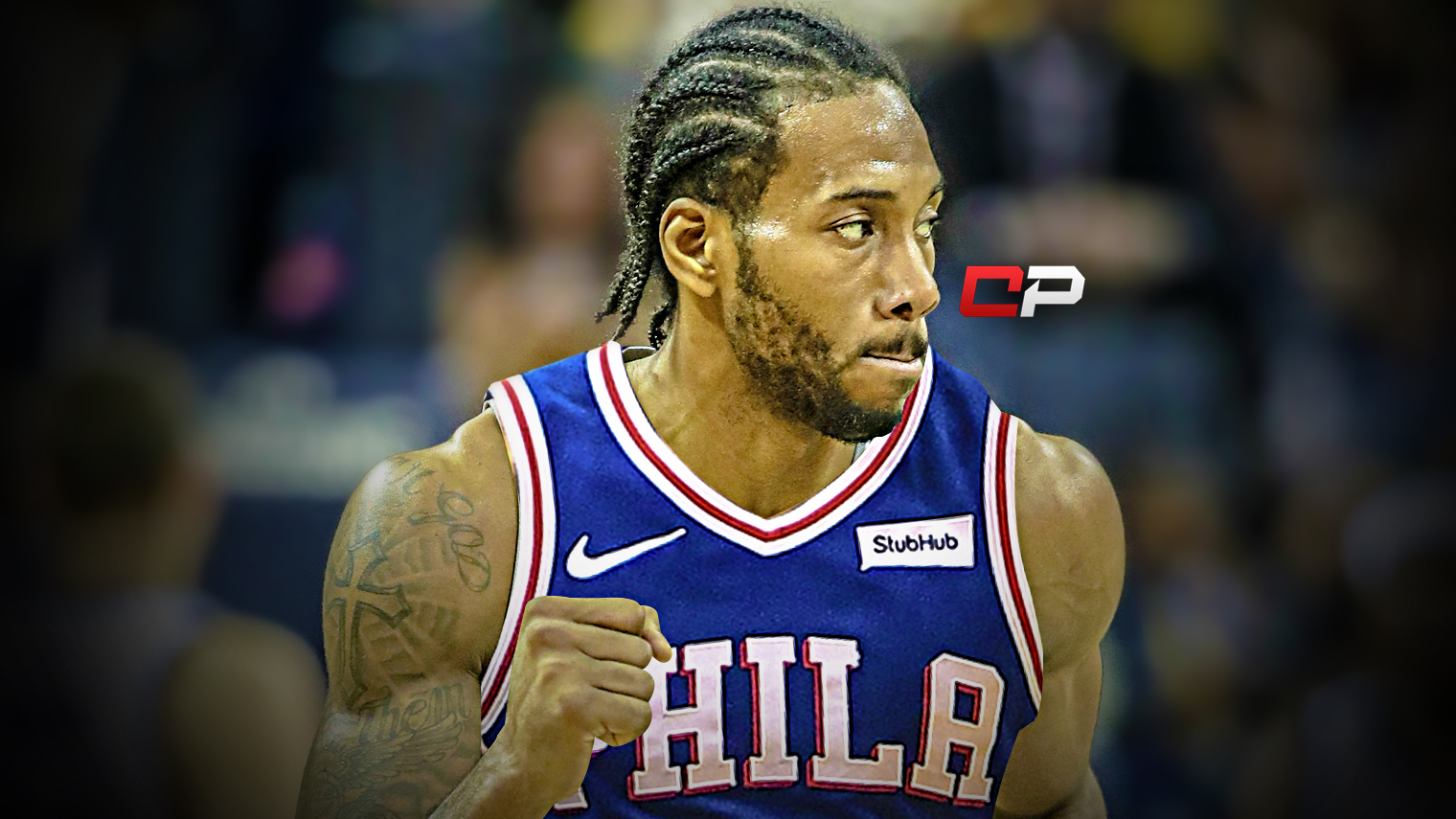
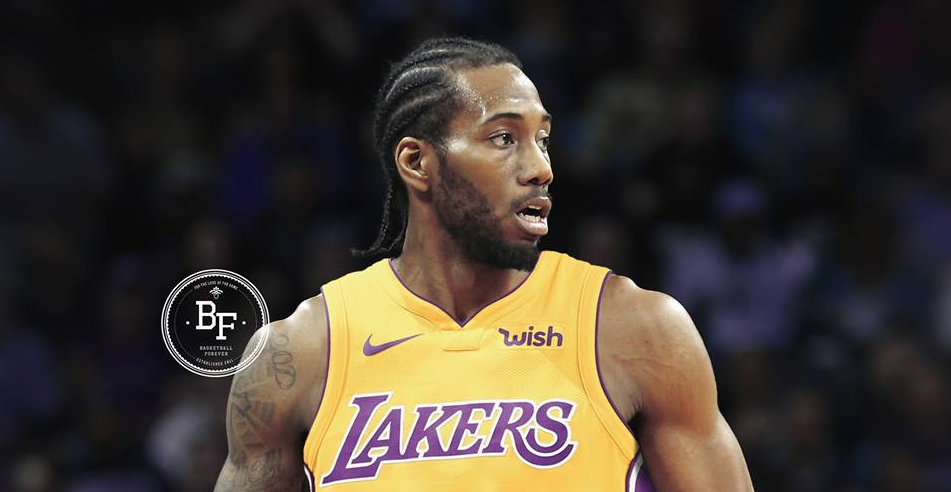
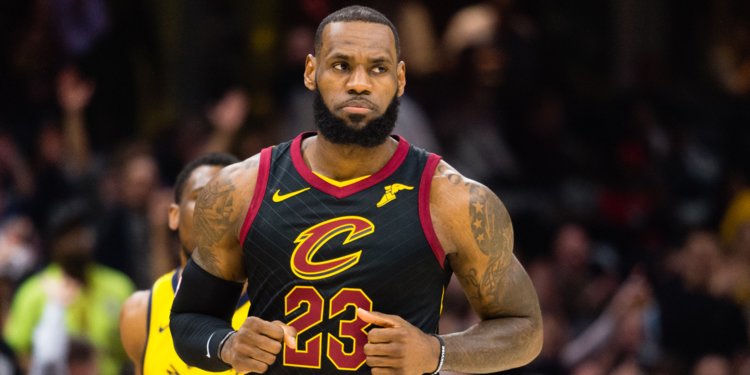
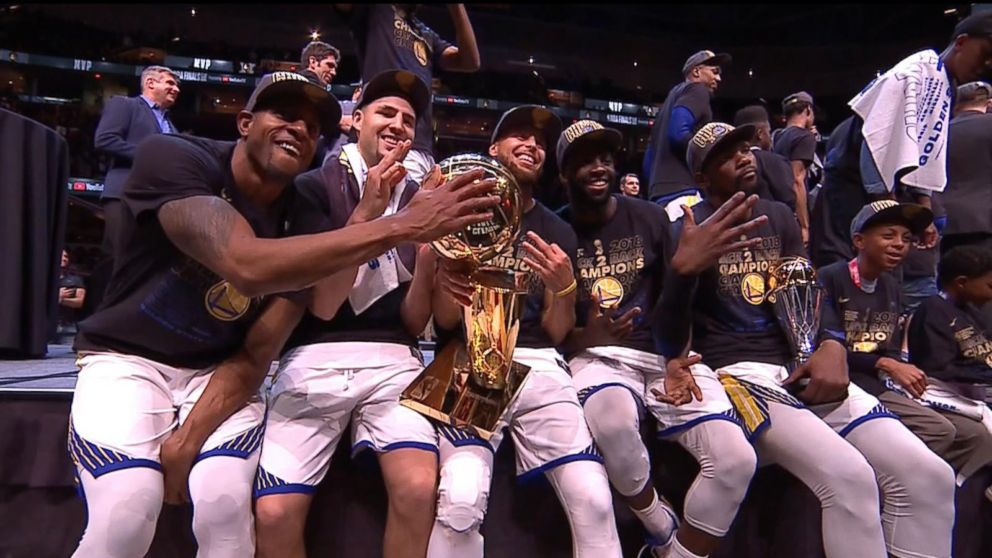
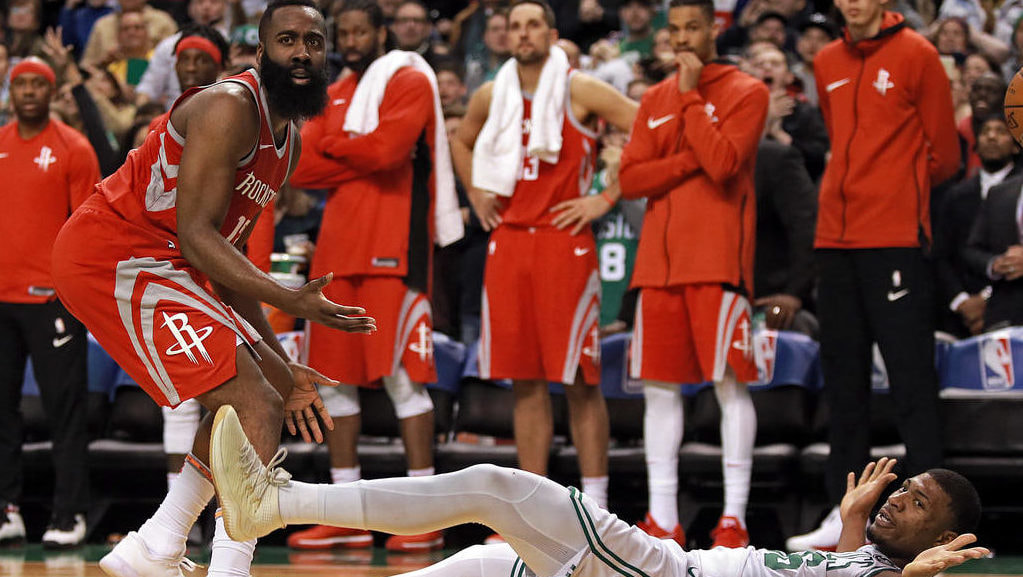
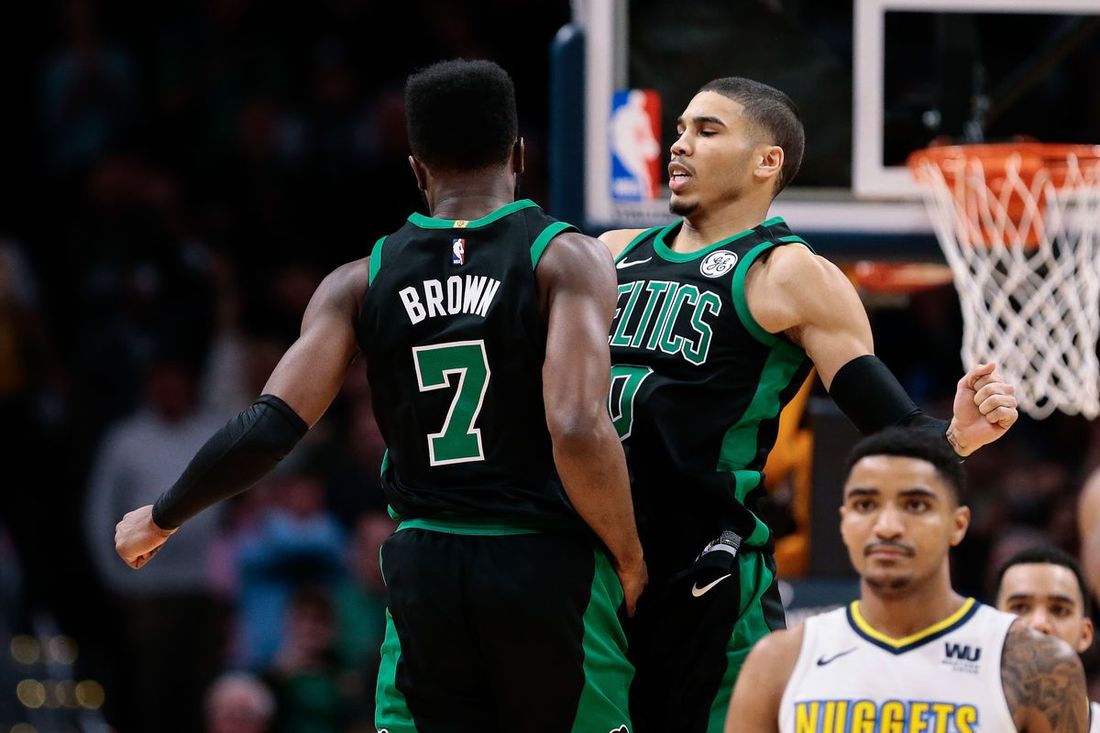
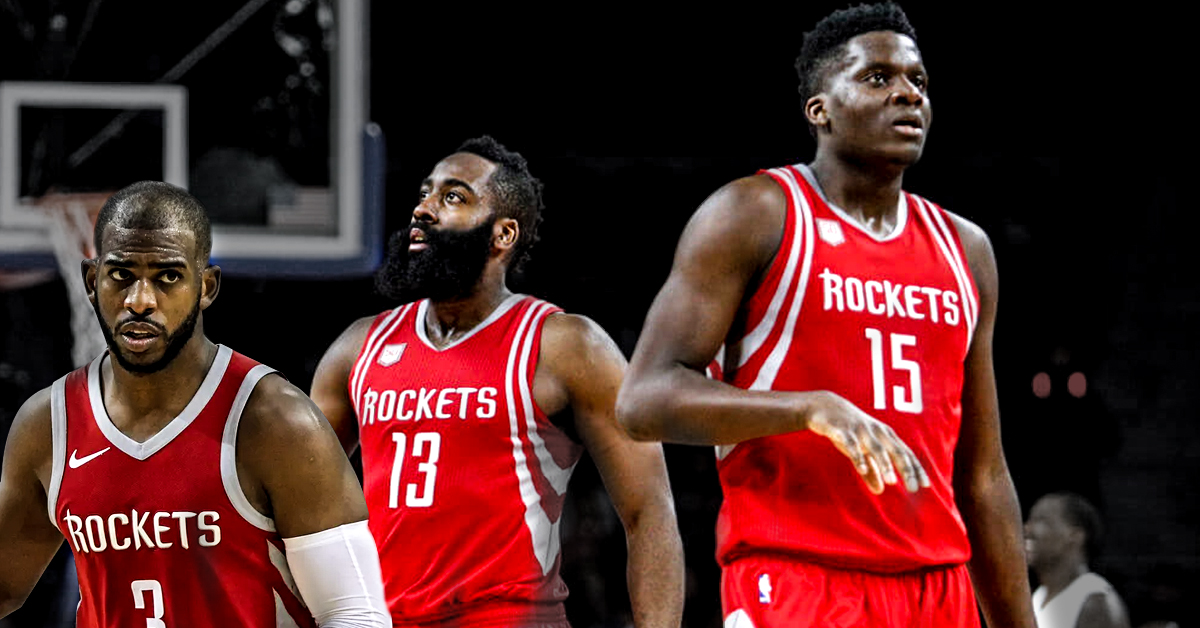
 RSS Feed
RSS Feed
